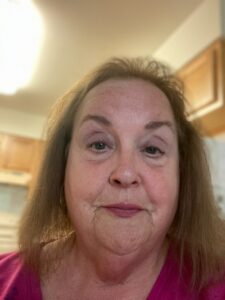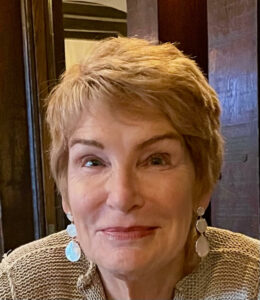
MMAP helps residents save thousands of dollars in prescription drug costs
by Gail Allyn Short
Detroit resident Tina Ferguson was days away from her 65th birthday and needed to sign up for Medicare. She had been trying to find a Medicare plan on her own. “I did a lot of research online and searched for handouts and leaflets, anything I could find. I tried to gather a lot of information to make a decision,” she says.
But she still had questions about the program. At the time, she was enrolled in Healthy Michigan, a Medicaid program for low-income adults ages 19 to 64 who meet the program’s income requirements. But her eligibility was scheduled to end after she turned 65. She urgently needed to decide on a Medicare plan.

MMAP region 1A client
Then Ferguson heard about the Michigan Medicare Assistance Program offered through The Helm, a senior center in Grosse Pointe Farms. There, she met with MMAP volunteer counselors Deborah Wagner and Sarah Truss to discuss her case.
Ferguson had already applied for the Medicare Savings Program where the state helps people pay for their Medicare premiums, deductibles, coinsurances and drug costs. However, as Wagner feared, Ferguson was denied because her income and assets were not in alignment with the program restrictions.
The denial is not necessarily surprising given the complexities of the Medicare system, which requires a thorough understanding and careful consideration of its many parts and coverage options.
“Without MMAP, I wouldn’t have felt confident about the choices I made regarding my supplement and prescription plans.”
Tina Ferguson, MMAP region 1A client
Medicare is a government health insurance plan for people 65 and older and individuals under 65 with disabilities. Original Medicare consists of Part A, which covers hospital and skilled nursing care, and Part B, which covers medical costs outside the hospital. To cover expenses not included in Parts A and B, individuals often use Medigap supplement plans. Medicare Part D covers prescription drugs, and Part C, or Medicare Advantage, provides additional benefits like dental, vision, and hearing through private insurers.

MMAP volunteer counselor
“Deborah broke down all the information for me. She made it much simpler and easier to understand,” says Ferguson. “She was very informative.”
Ferguson’s Medicare coverage began on July 1. After discussing options with Wagner, she decided on a Medigap plan on July 31, coincidentally her birthday and the deadline for enrollment. Wagner contacted the plan, which agreed to make her coverage effective on Aug. 1 if the application was faxed by midnight. “I don’t know if every representative or volunteer would have thought to do that, but she did, and it worked out well,” Ferguson says.
With her Medigap plan in place, Ferguson still needed help paying for her numerous prescriptions. Social Security had automatically enrolled her in WellCare, a prescription drug plan she qualified for based on her income, but Wagner determined it wouldn’t cover one of Ferguson’s expensive medications.
Fortunately, Ferguson qualified for and was also automatically enrolled in Extra Help, a Medicare program assisting those with limited income in covering Part D costs like copays and deductibles. Wagner and Ferguson then researched drug plans using a government software program that checks prescription coverage and calculates out-of-pocket costs based on the chosen plan. They identified a drug plan with a low $3 monthly premium that covered all her medications, saving her more than $7,500.
“Without MMAP, I wouldn’t have felt confident about the choices I made regarding my supplement and prescription plans. A year later, I still have the same plans,” Ferguson says.
“I feel I made the correct choice.”
To find a local certified MMAP counselor, explore their regional contact information listed by county.



